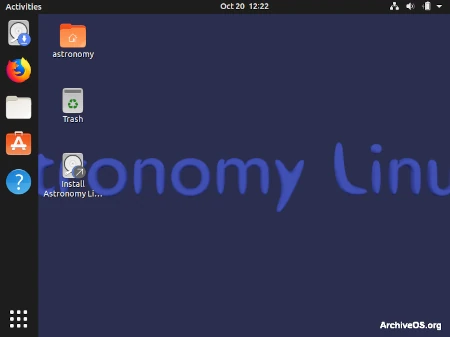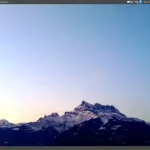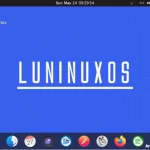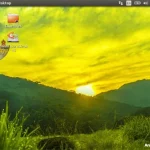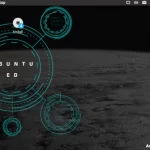Last Updated on: 5th November 2023, 05:44 pm
Web site: astronomylinux.ap-i.net
Origin: World
Category: Specialist
Desktop environment: GNOME
Architecture: x86_64
Based on: Ubuntu
Wikipedia:
Media: Live DVD
The last version | Released: 19.04.0 | February 9, 2020
![]() Zobacz po polsku: Astronomy Linux
Zobacz po polsku: Astronomy Linux
Astronomy Linux – a live 64-bit DVD based on Ubuntu Linux mini.iso. This distribution is designed for astronomy amateurs that are familiar with the Linux Ubuntu Operating System. It is free to download and use.
Some of the many included programs:
– Cartes du Ciel/Skychart enables access to a large collection of the sky atlases. This software allows a big range of possibilities to study celestial objects: virtual observatory mode, SAMP protocol support, conversion of text catalogs for a graphical display with the help of the built in CatGen (Catalog Generator). It also includes a HNSKY sky atlas which has a telescope control function through INDI server. The INDI server and equipment drivers control is operated through INDI starter.
– The Virtual Moon Atlas is designed for the Moon study. Virtual Planet Atlas lets you explore Mercury, Venus and Mars. If you want to create a robotic observatory, you can use KStars, a program which has a large set of the necessary tools.
– Stellarium, Celestia, Digital Universe, BoPlanets, Where Is M13 are planetarium programs and interactive night sky maps.
– Lin_guider and PHD2 are used for the autoguiding during astro-photo sessions.
– WxAstroCapture, Audela and oaCapture are used for the Moon and planet photography, while CCDciel, GoQat, OpenSkyImager, Audela and KStars are used for taking photos of deep-sky objects. Digital camera support is made through the libgphoto2 library. It is also used by Entangle, a cameras control program and one of the INDI drivers. The processing of astronomical images is made through AstroimageJ, Siril, THELI GUI, Lxnstack, ImPPG, GCX, C-Munipack, Stackistry, Regim, MicroObservatoryImage. SAODS9, fv FITS Editor, APT, Aladin, nip2 are installed for the *.FITS analysis and editing.
– To search and explore variable stars, there are two programs included, C-Munipack and Vstar. Observation Manager performs a role of an observation planner and logbook.

